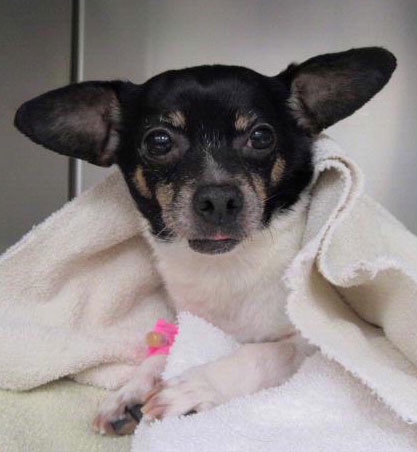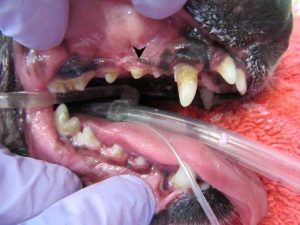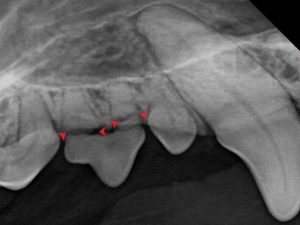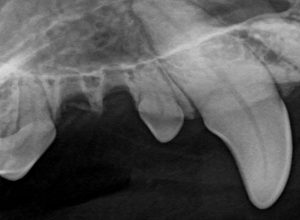
Spike is our pet of the month for May. He is a 7 year old Chihuahua mix. He is a very sweet boy and very cooperative for his exams at the vet- even his teeth. He has had yearly dental cleanings for the past 3 years and eats a prescription dental food.
At his last veterinary exam it was noted that he had tartar and early periodontal disease. It was recommended he have general anesthesia with a complete oral exam, deep cleaning and full mouth x-rays.
The day of his dental procedure, Spike had another exam to ensure he was healthy and would have no issues with the anesthetic. His teeth were also evaluated again to ensure nothing had changed. Based on his conscious oral exam his teeth looked good and he just had periodontal disease.
Once Spike was anesthetized a full oral exam was done. A complete oral exam entails:
- Visual exam and palpation of the tongue, hard and soft palates
- Opening and closing the jaw to ensure smooth motion of the joint
- Ensuring the bite is normal
- Probing around each tooth. This checks for gingival pockets, mobility of the tooth, tooth fractures, defects in the enamel
- Charting the amount of tartar build up and gingivitis

This is a picture of Spike’s teeth prior to them being cleaned. The black arrow points to the mobile premolar tooth.
During Spike’s exam we found that he had a very loose premolar. Dr. Adrian Nevill suspected that Spike may have fractured the roots of the tooth under the gingival margin. Radiographs would need to be done to confirm this.
Spike’s teeth were first cleaned and the full mouth x-rays were done.
Without having done a thorough oral exam under anesthesia and x-rays, we would have never known Spike had a painful broken tooth.
This is why doing routine oral exams and dental cleanings under anesthesia is so important. It is very easy to miss abnormalities in the mouth, even with compliant, well behaved dogs like Spike that allow a good oral exam awake.

The red arrows point to the fracture lines across the roots of the premolar tooth. The fracture was below the gum line.
It is extremely difficult to tell if animals have oral pain. Most, if not all, animals will continue to eat with severe oral pain. Many times painful teeth are not found until an animal is under anesthesia and undergoing a dental procedure with full mouth x-rays.
Undiscovered dental disease has long reach effects throughout the entire body. Not only will the pet be in chronic pain, infection from the mouth will spread via the blood to many other organs causing disease.
Proactive dental care will ensure your pet lives a long, pain free and happy life!

 6512 12th Ave NE
6512 12th Ave NE





